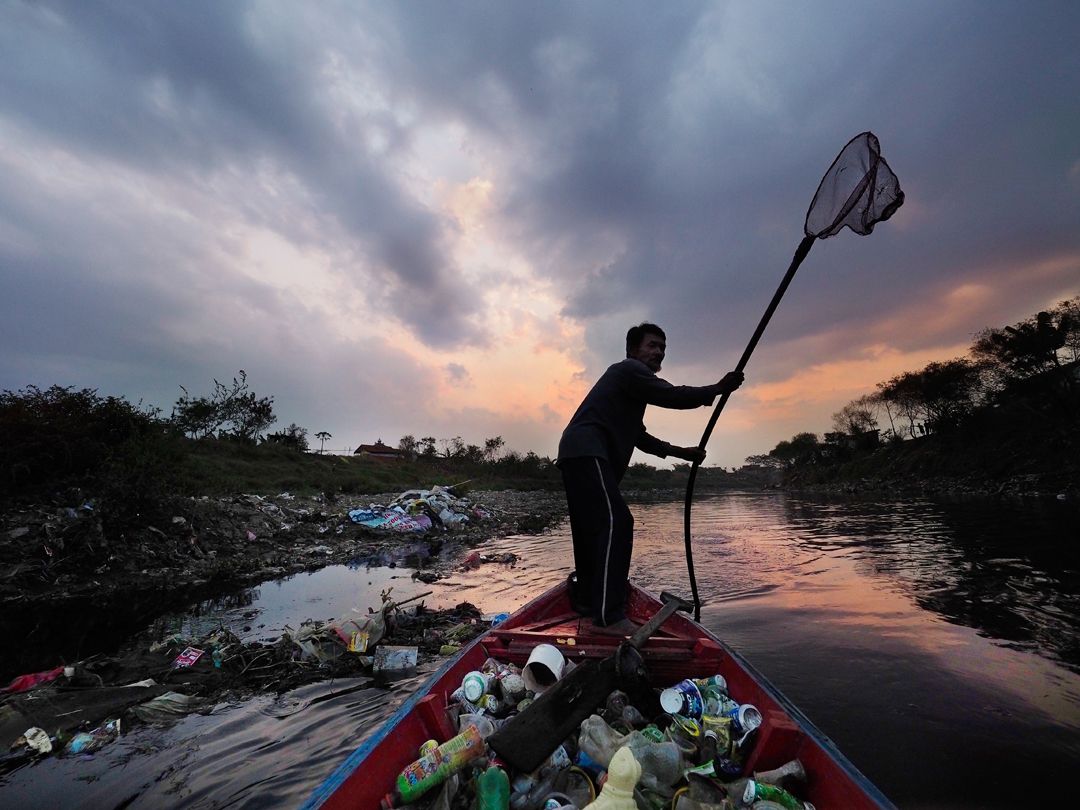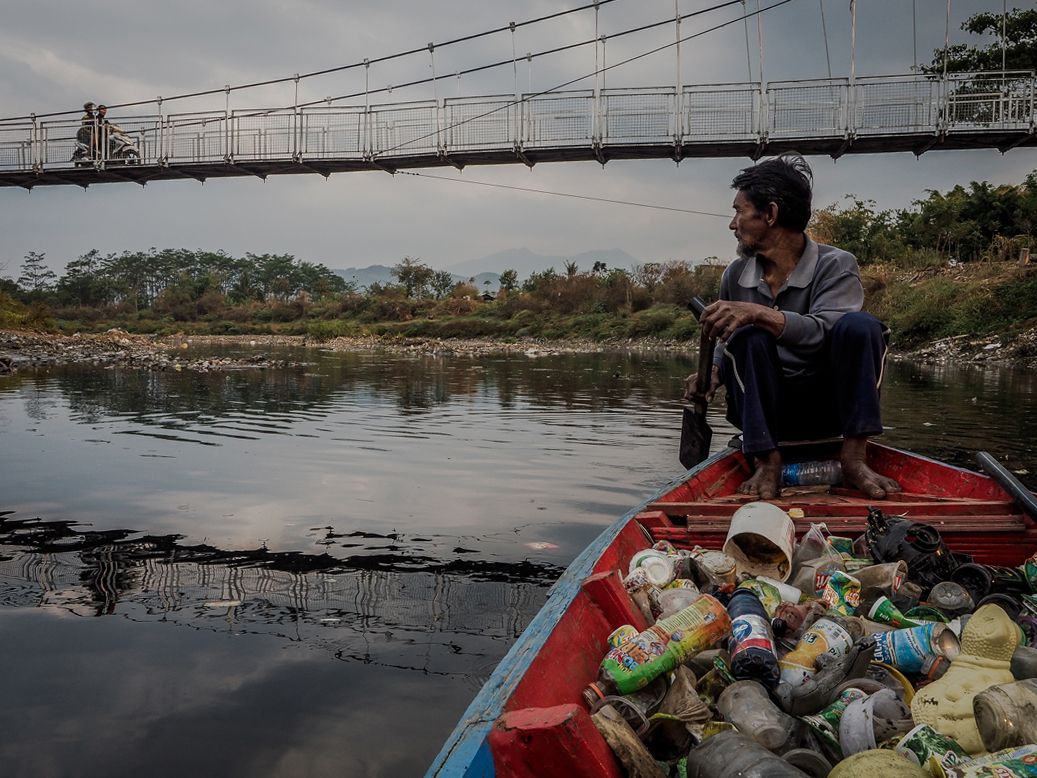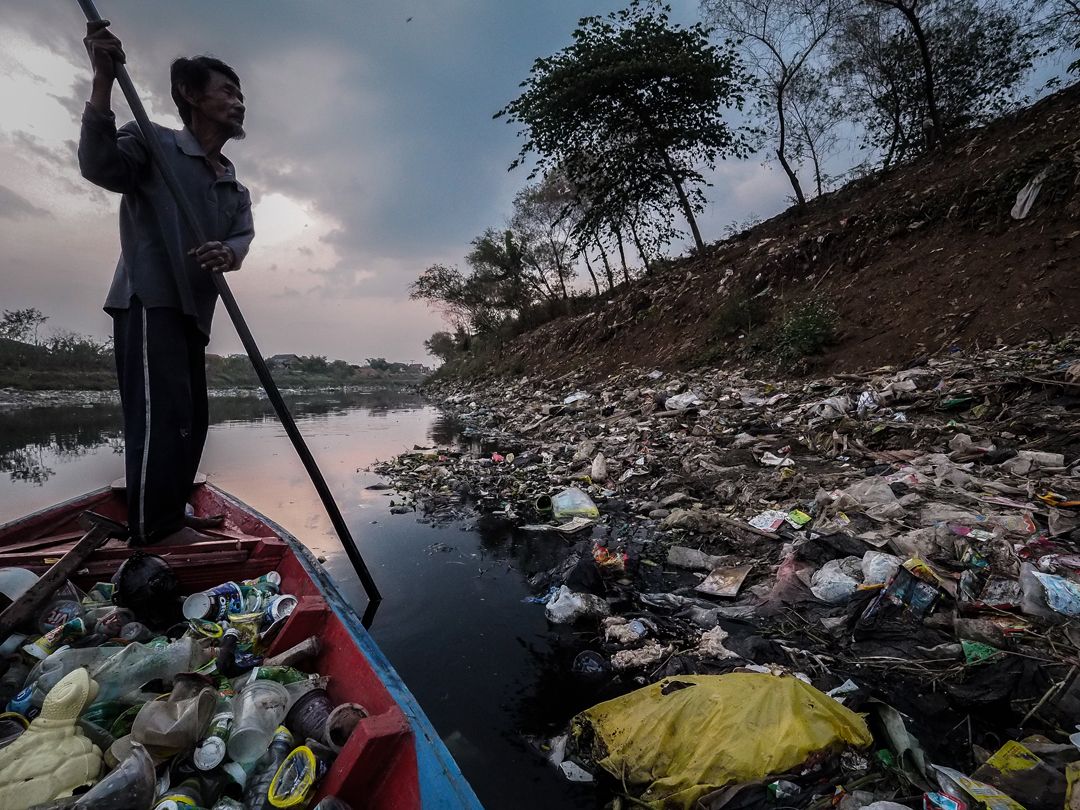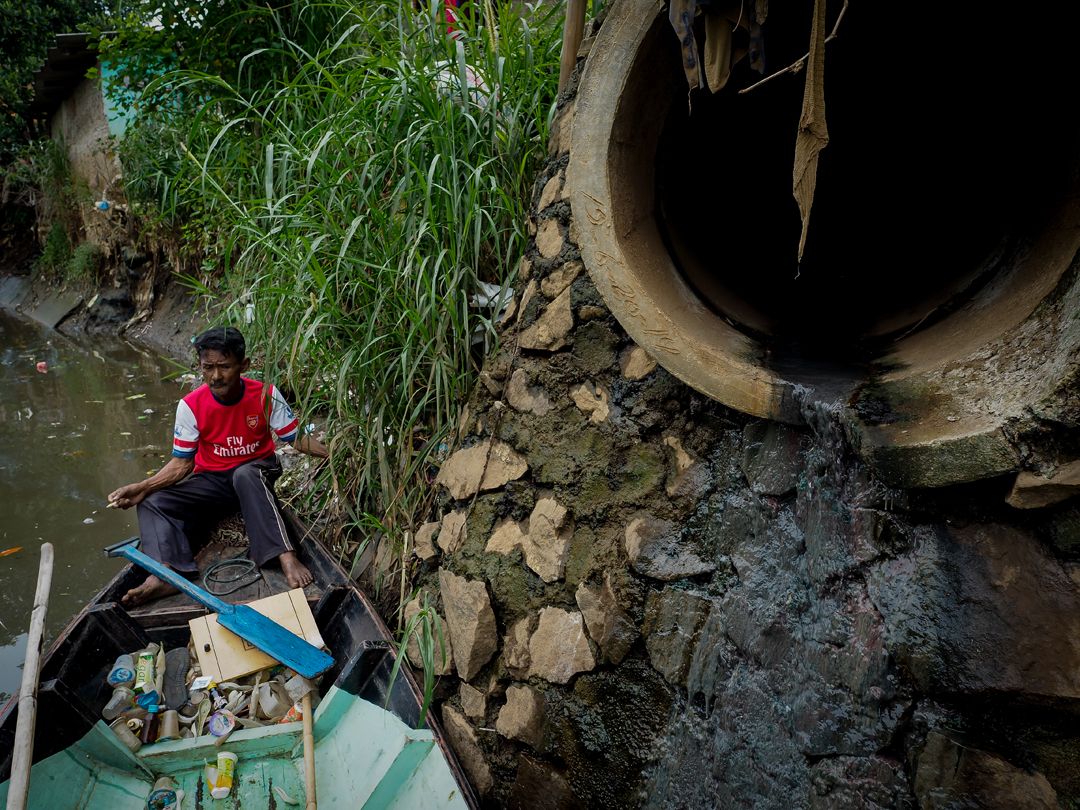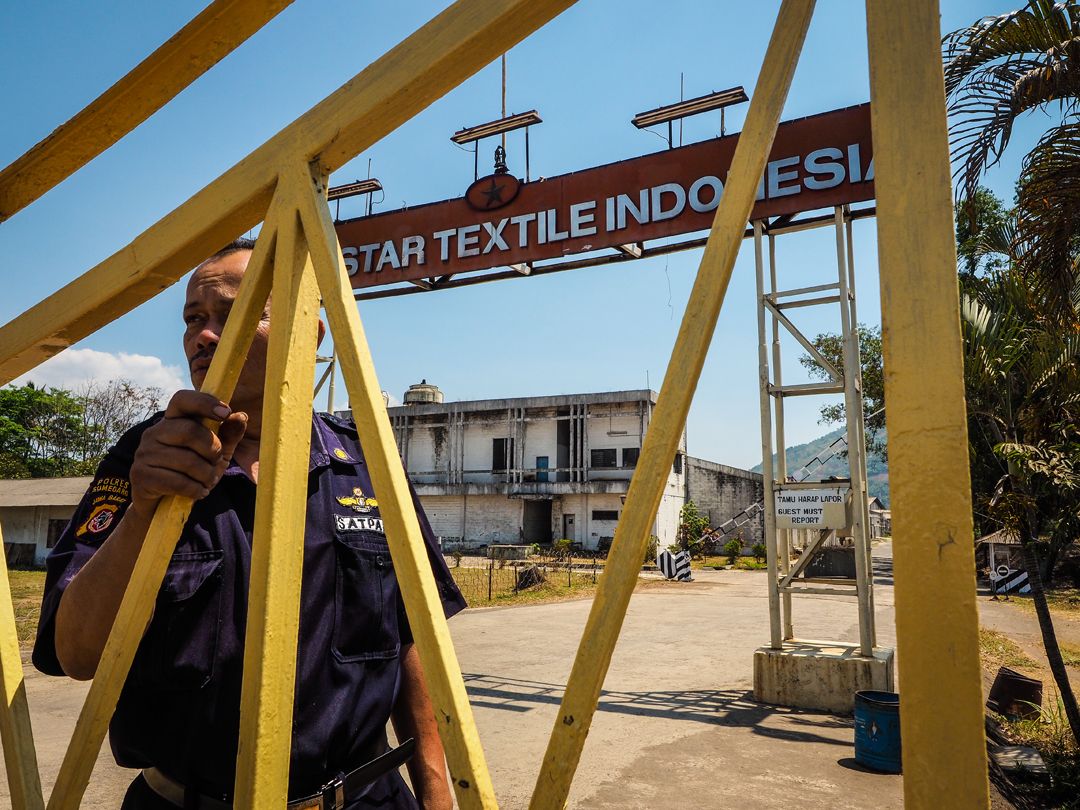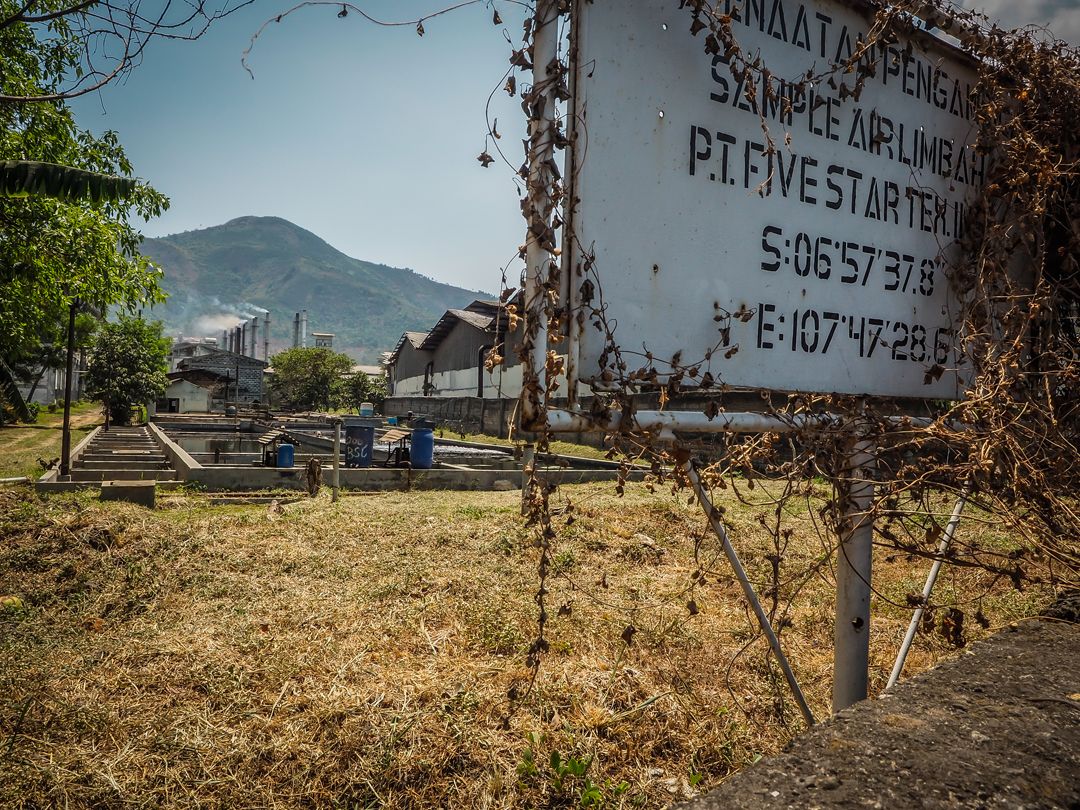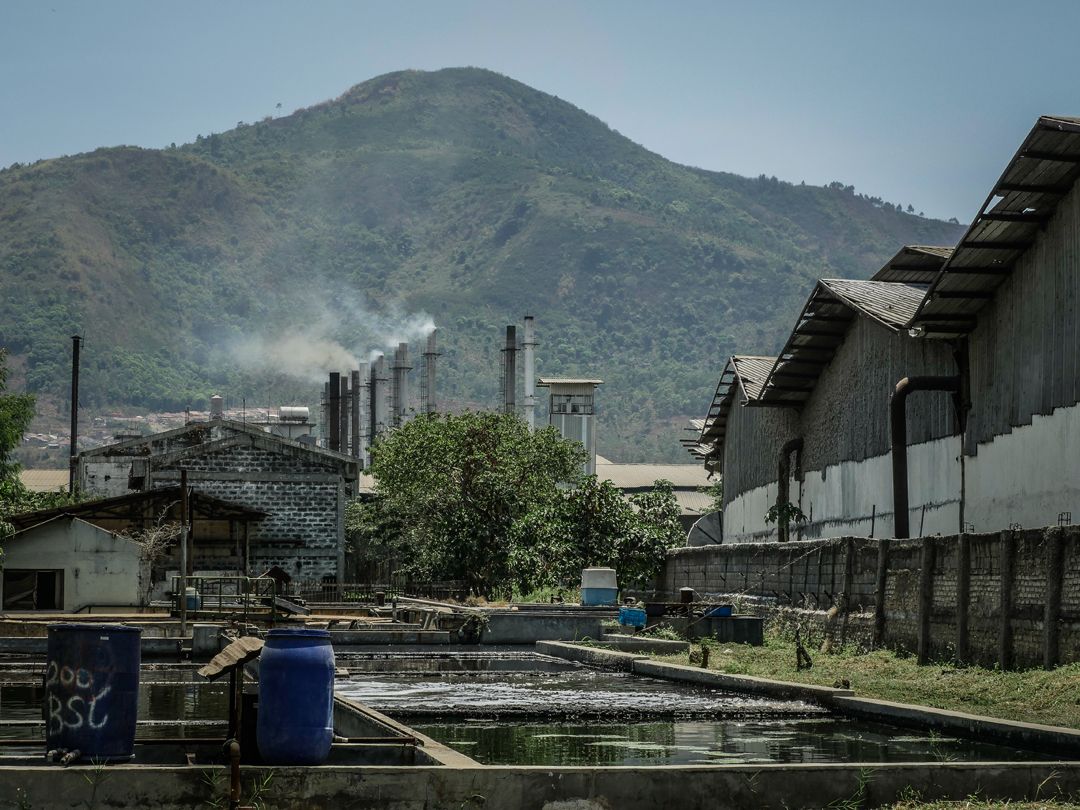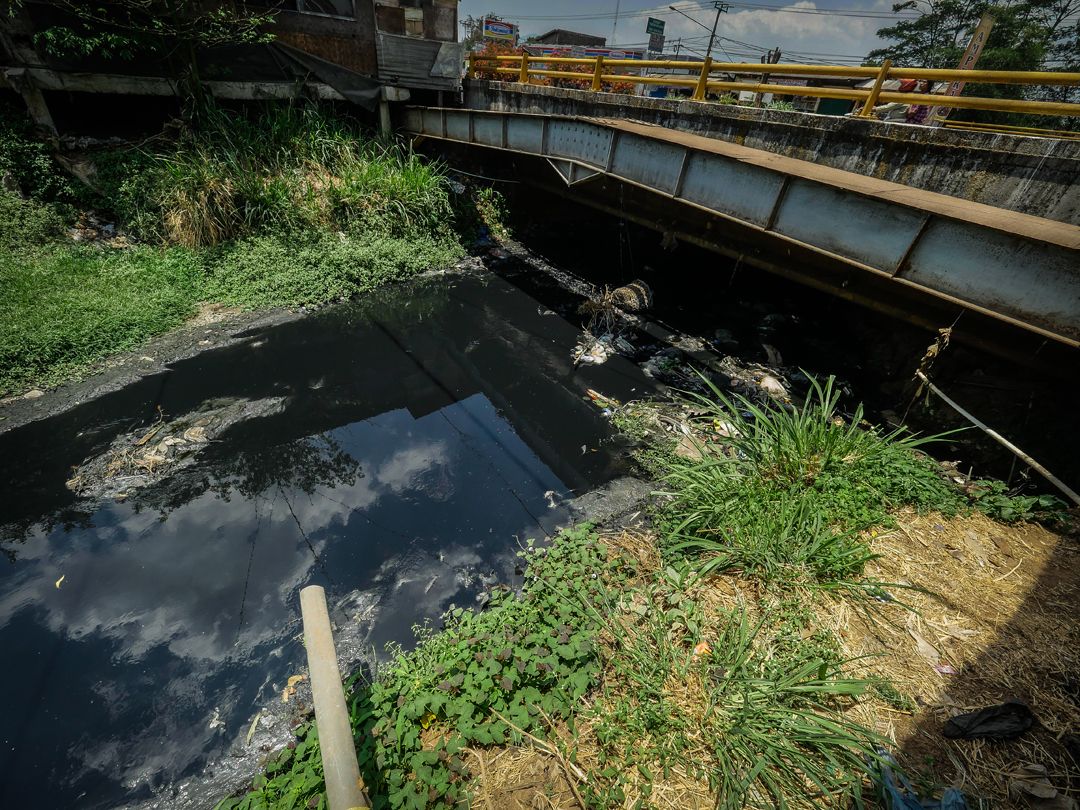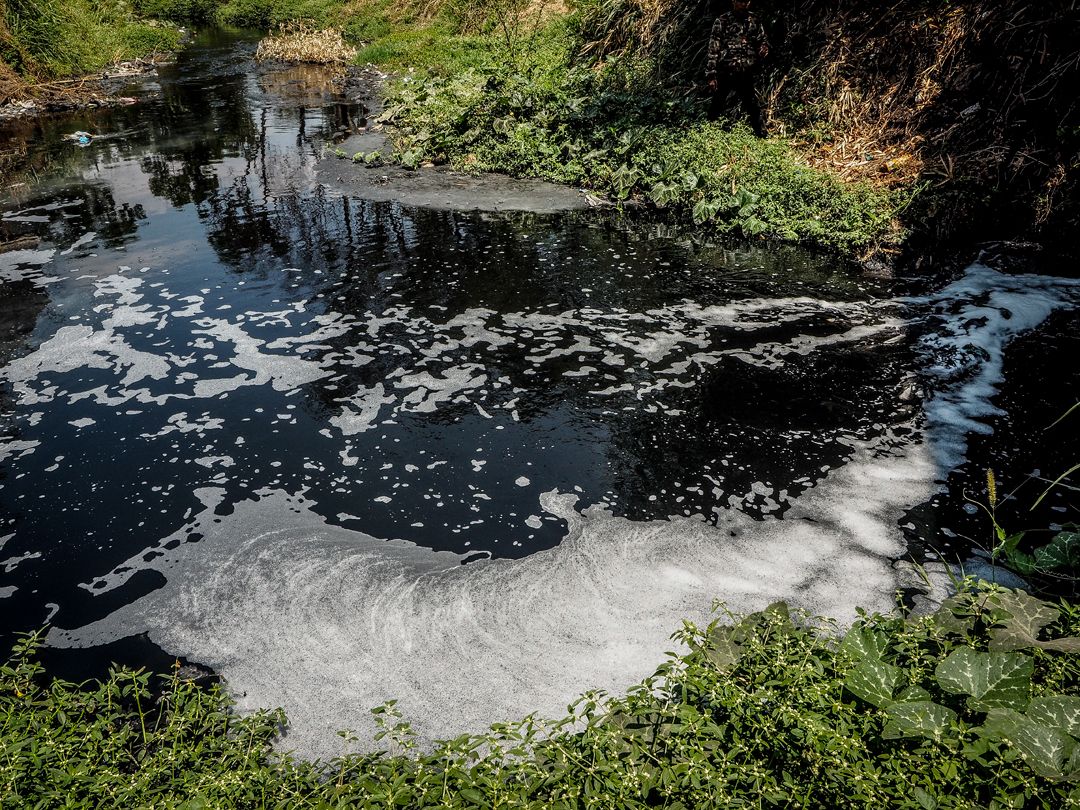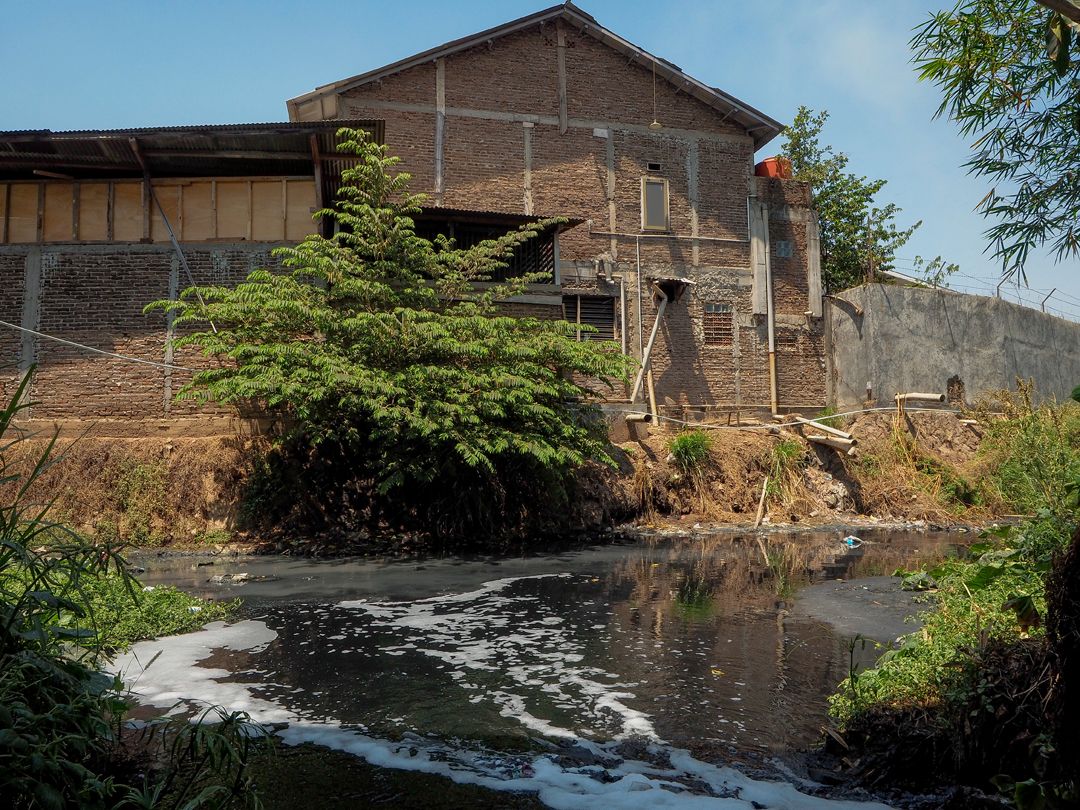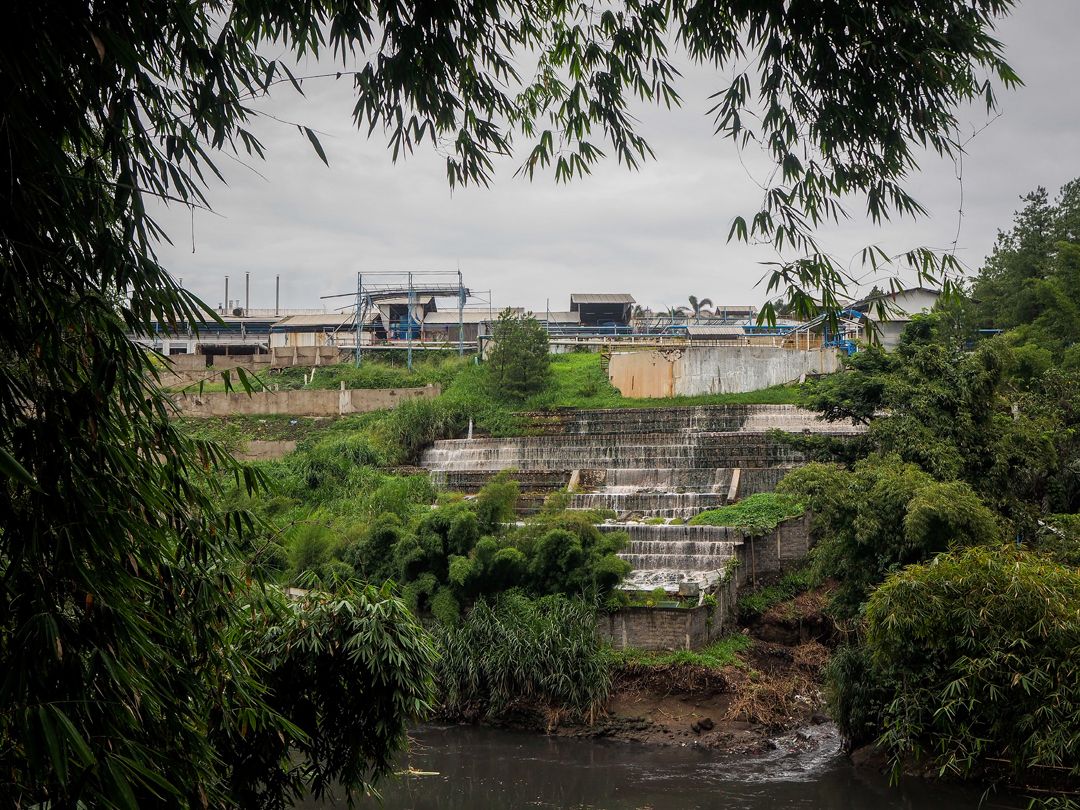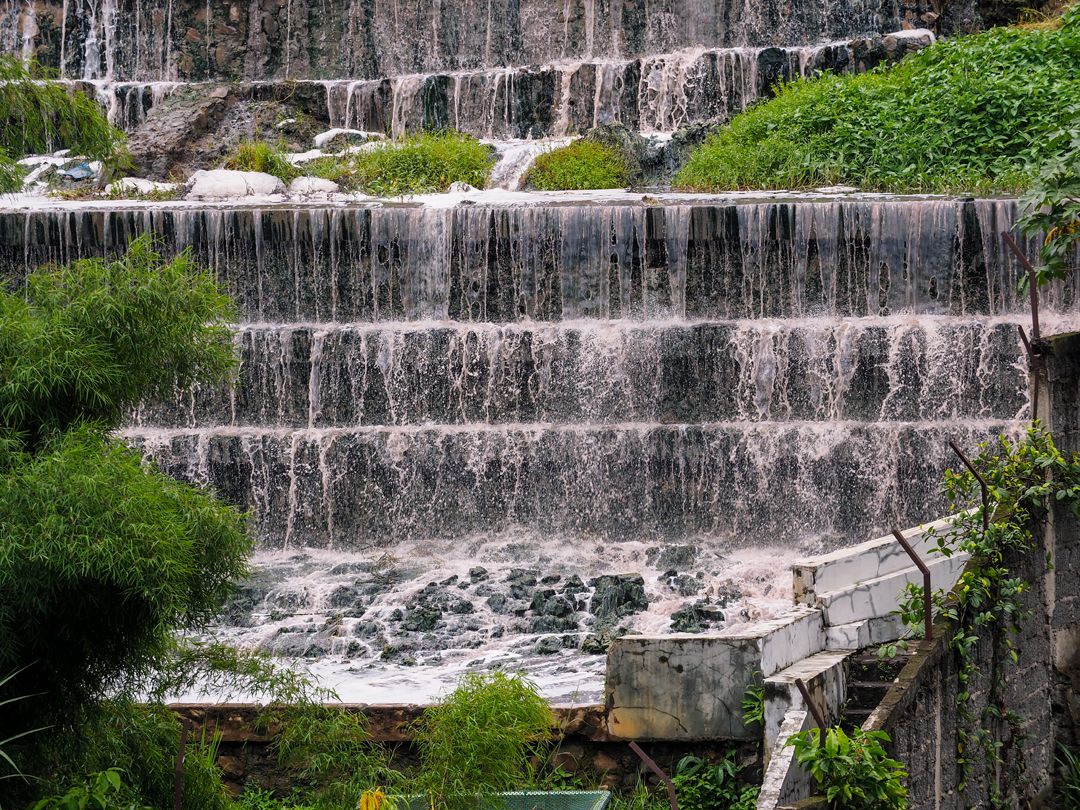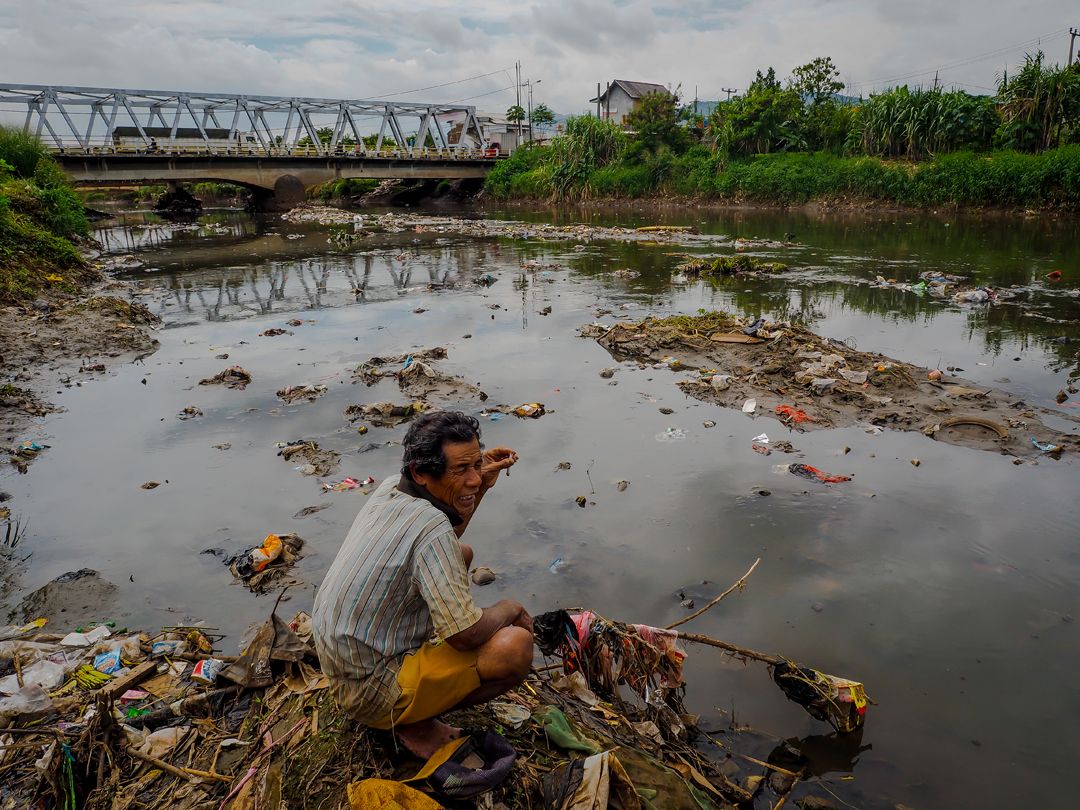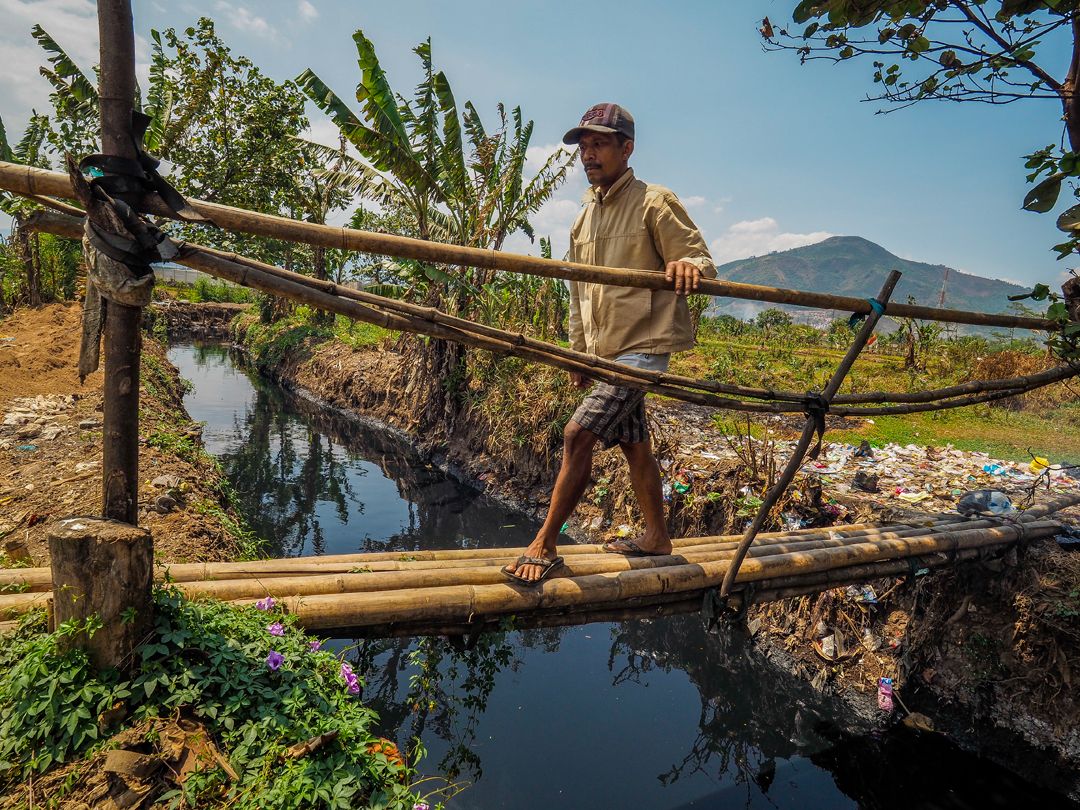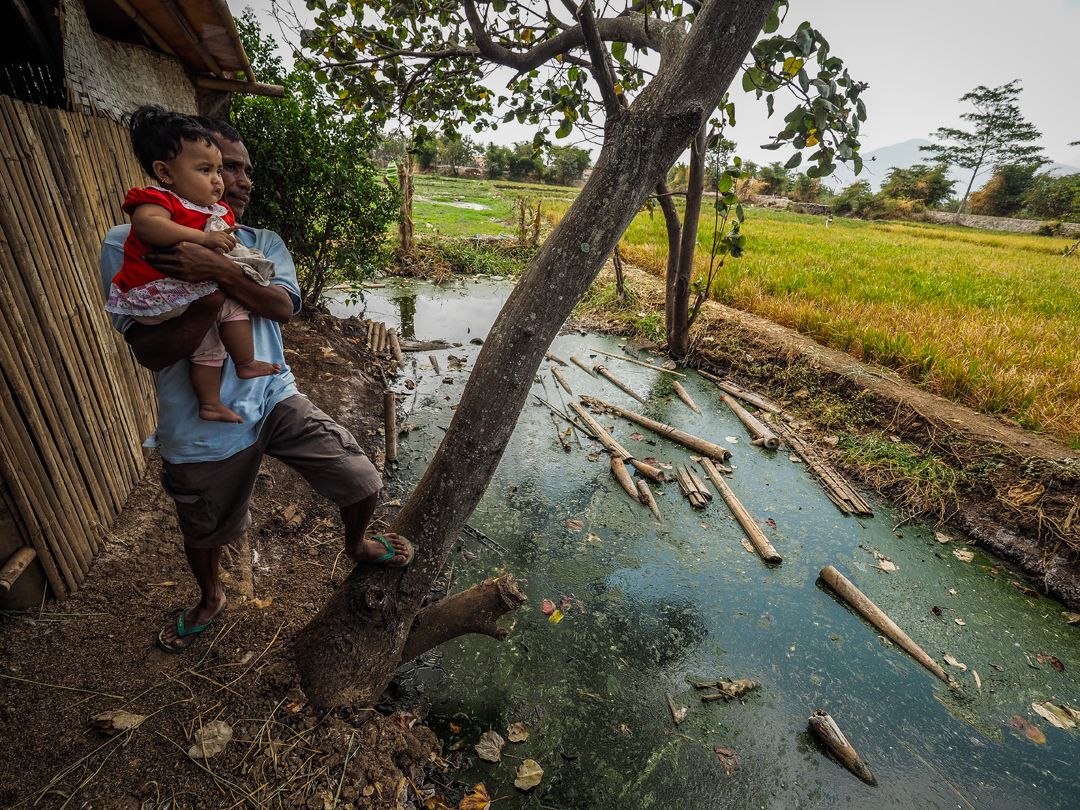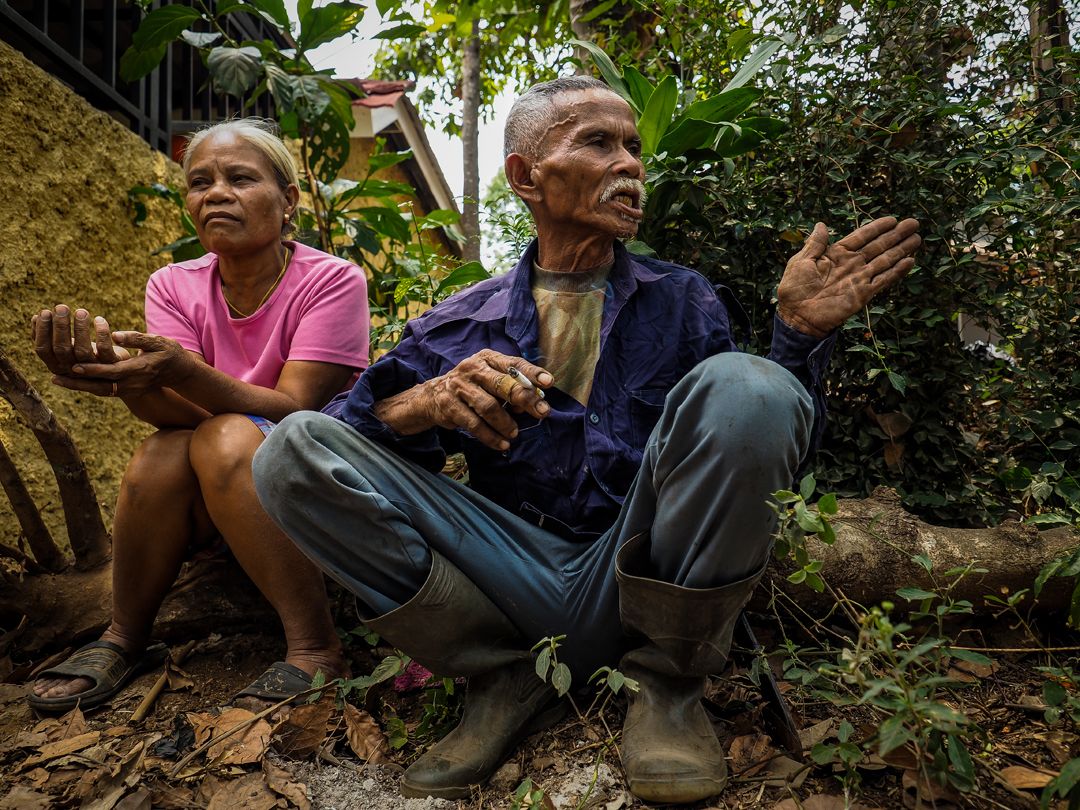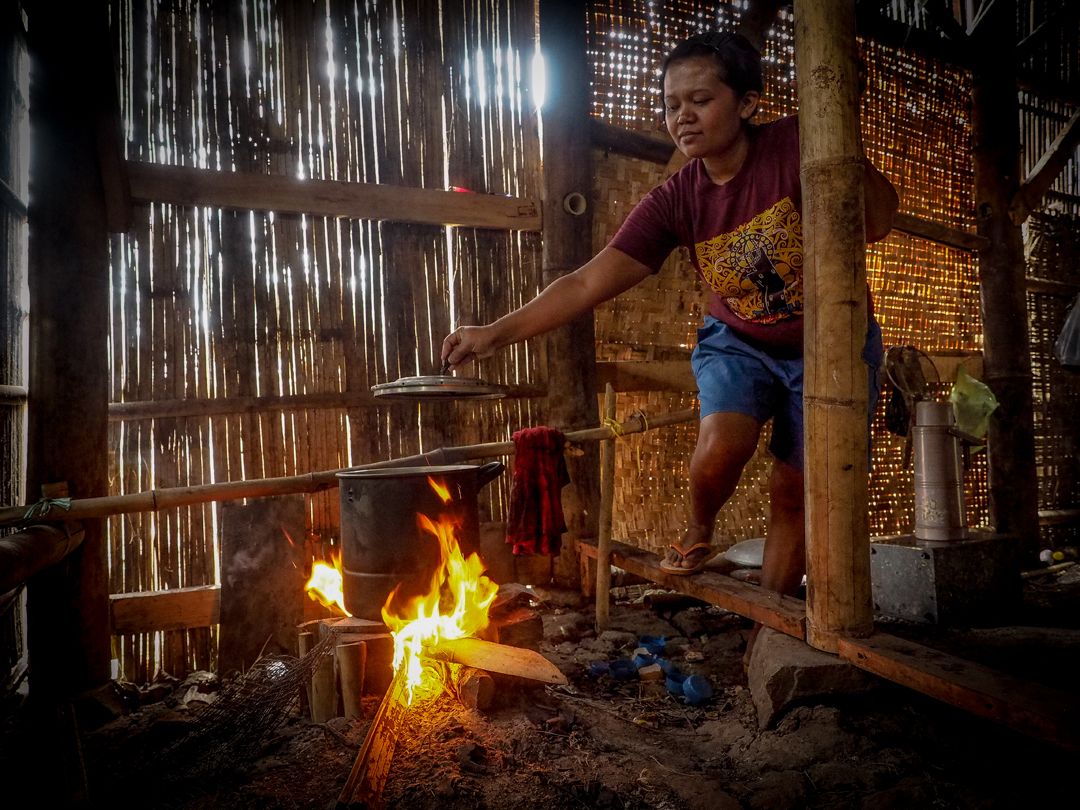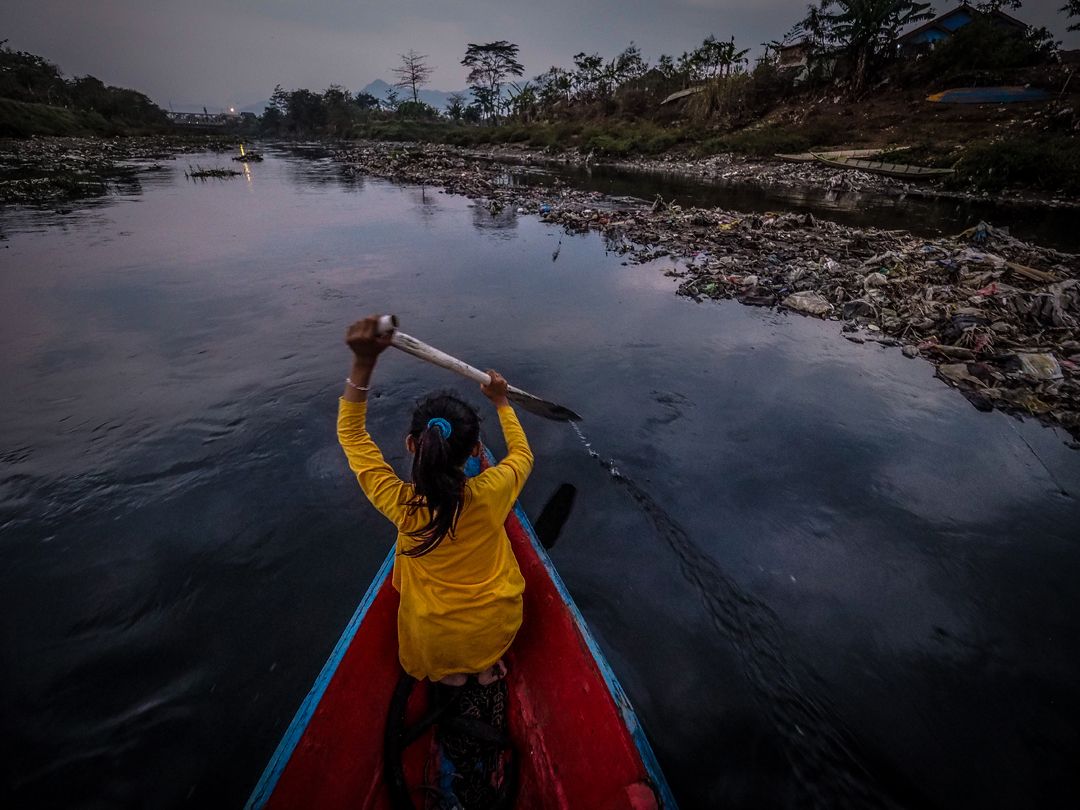CIGADO, INDONESIA––Dedi Rahmat glanced over his shoulder toward the west and quickly decided he had time for one more run on the river. Nodding toward his long canoe tied to a bush at the bottom of the steep bank, Rahmat agreed to take me down this stretch of the Upper Citarum River. It was, I figured, the best way to get a lens on one of the most polluted rivers in the world.
Rahmat is one of hundreds of scavengers who ply the river, gathering plastic bottles and aluminum cans for recycling. When he came to Bandung in the early 1970s to work at an embroidery mill, the river, he says, ran clean and clear. As the textile industry grew, Rahmat watched the water grow darker and dirtier by the year with wastewater from the factories. Today, he says, he feels guilty about his old job and what the textile mills have done to the river.
Some estimate there are more than 2,000 industrial facilities, including 200 textile mills and garment factories, concentrated in the Citarum River Valley in the Bandung region. For decades, the Indonesian government has permitted factories to flush untreated wastewater into canals leading to the river, as long as the effluent didn't contain certain chemicals deemed too hazardous. In May, the Indonesian High Court, ruling in a lawsuit brought by Greenpeace Indonesia and community organizations ruled to suspend, cancel, and revoke government decrees allowing legal dumping by three of Indonesia's largest factories—PT Kahatex, PT Insan Sandan Internusa and PT Five Star Textile. The factories have appealed the ruling, arguing that without their wastewater dumping permits, they will be forced to close and put tens of thousands of people out of work. The case is currently pending before the Indonesian Supreme Court.
The Indonesian government, meanwhile, blames the vast majority of the pollution on the region's residents, who dump their household trash and flush raw sewage into the river. Many of the smaller villages lining the Citarum River have no public garbage collection or landfills, leaving people to choose between burning their waste or throwing it into the river.
On the day I went down the river with Rahmat, it was 91 degrees Fahrenheit. A nauseating stench filled the air. The banks were choked with garbage and trash and the sludgy water looked like motor oil. In places, the river was actually bubbling, like a witch's brew. Styrofoam food containers, plastic water bottles, clothing, cans, broken toys, cardboard boxes, and garbage bags accumulated at points in the river, piling up and matting together so tightly that I could—and did—walk across the trash without punching through to the water.
Rahmat paddled through the islands of floating trash, using a long pole with a net to snag anything he thought he could sell. "I'm afraid of what's in the water," he said, "but I'm poor. So what can I do?"
At spillages emptying into the river, the fast-running black water was slick with chemicals and dyes. When Greenpeace tested water samples near major textile mills in 2012, the environmental group found persistent environmental contaminants and toxic chemicals known to be toxic to aquatic life and potentially harmful to humans. A 2013 Asian Development Bank report documented extensive pollution, finding that by most measures, the river was horribly polluted. The ADB report, for instance, found fecal coliform bacteria—possibly from human sewage and agricultural manure—at 5,000 times the allowable level in some places.
The Citarum River flows for about 186 miles from the mountains of southern Java to the Java Sea, providing irrigation and drinking water for more than 25 million people, including residents of Jakarta. For years, numerous environmental groups have included the Citarum River on their annual lists of most polluted bodies of water, pronouncing the water quality poor for most of its length. The Asian Development Bank committed in 2008 to provide Indonesia with a $500 million, multi-year loan to finance clean-up and restoration of the river, though the efforts have been focused primarily on the West Tarum Canal and Citarum River near Jakarta.
When I visited the Upper Citarum River in January and February 2016, there was no sign of clean up. The fish are largely gone and fishermen and the elderly, like Rahmat, scavenge trash to buy food. Skin irritations and diseases are common. Factory effluent is pumped into the same canals that irrigate the rice paddies. On days when the dyes are heavy, water in the rice paddies turns black or navy blue. Farmers complain of stunted crops; rice deemed not fit for human consumption is fed to the cattle.
I met Dedi Rahmat near a railroad trestle where young boys were jumping into the river 15 feet below to swim. We pushed off and Rahmat plowed through the middle of the trash islands, leaning out of the boat to scoop up plastics and aluminum. Every now and then, when the canoe got stuck in a particularly thick pile, Rahmat used the pole end of his trash-catching net to push the canoe backwards and free. The sun was going down when we turned to paddle back up the river with a boat full of trash.
In this part of the world, so close to the Equator, twilight vanishes in an instant. Darkness quickly follows sunset, then the night belongs to the bats––thousands of them, swooping low over the river and skimming along the surface. Even after it was too dark to see the bats, we could hear the whooshing of their wings. The oars sliced through the water in rhythm and from loudspeakers on unseen minarets, evening calls to prayer echoed across the valley. All day, I had been focused on the sights and the smells of the river, but now, in the pitch dark, it was the symphony of whooshing wings, slapping oars, and the adhan that defined the river and has stayed with me still.
